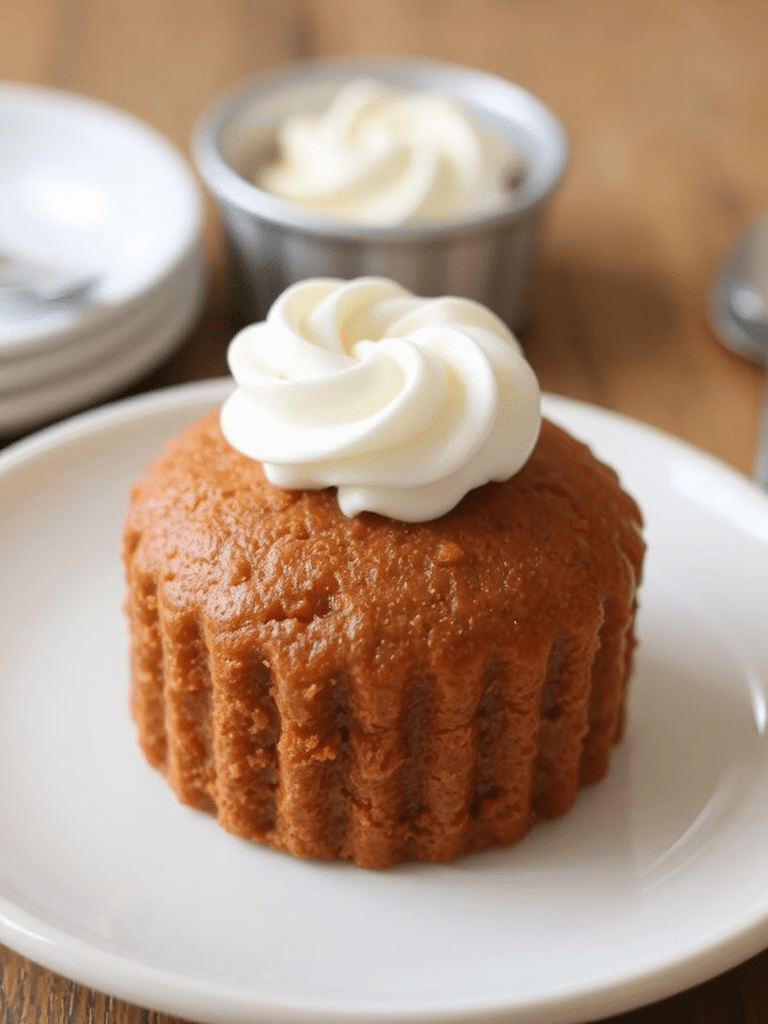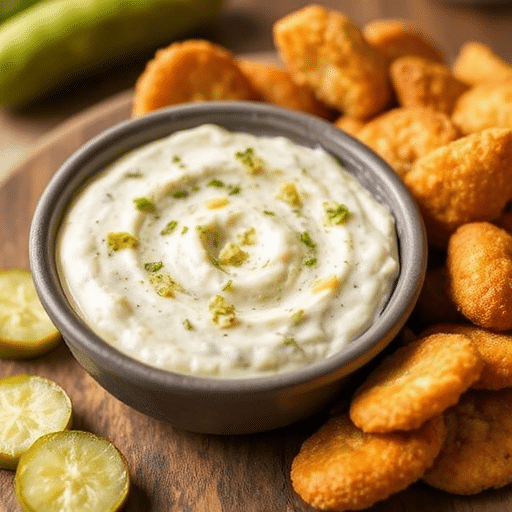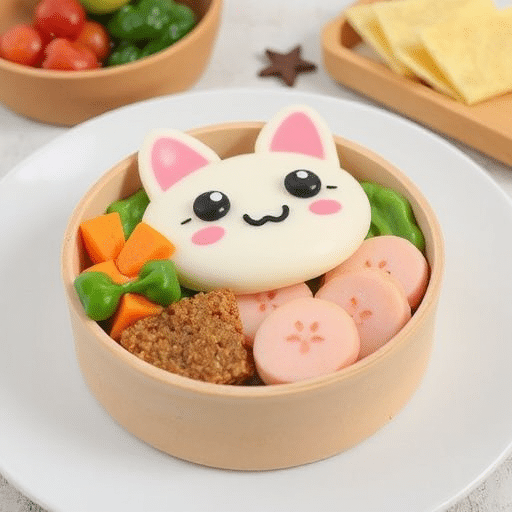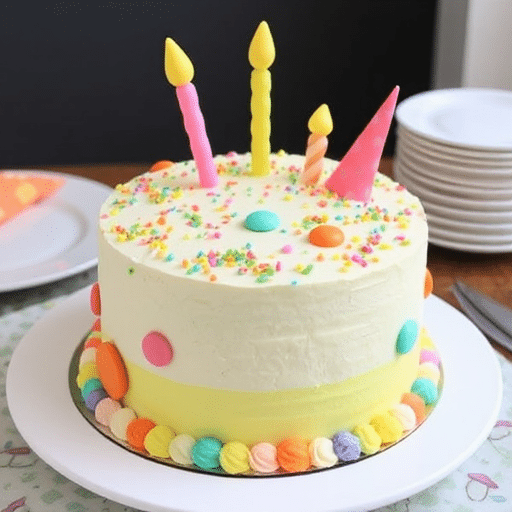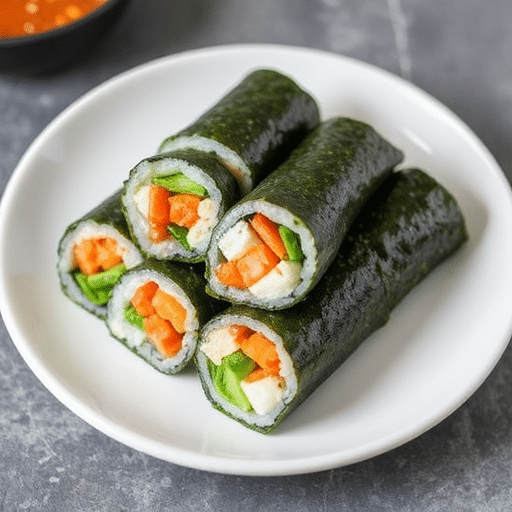Why are Mini Cakes Gaining Popularity, and Could They Be Your Next Baking Obsession?
Have you ever wondered why bite-sized delights are capturing the hearts (and stomachs) of so many bakers and dessert enthusiasts? Despite the traditional allure of a grand, multi-tiered cake, data shows a compelling shift towards smaller, more manageable confections. In fact, Pinterest searches for “mini desserts” have surged by over 60% in the last year, indicating a growing desire for portion control, personalized treats, and unique presentation. This trend isn’t just about cutting calories; it’s about culinary creativity, reducing food waste, and making baking more accessible and fun. If you’ve been looking for mini cake pan ideas that are both delightful to make and a pleasure to eat, you’re in the right place. We’re about to dive deep into a mini cake recipe that challenges the notion that big cakes are the only way to impress, proving that sometimes, the best things truly come in small packages.
Ingredients List
Crafting the perfect mini cake requires a harmony of flavors and textures. Here’s what you’ll need to embark on this delightful baking journey, with some flexible alternatives for your convenience.
- 1 ½ cups All-Purpose Flour: The foundational structure of our mini cakes. For a lighter, more tender crumb, you can swap out ¼ cup of all-purpose flour for cake flour.
- 1 tsp Baking Powder: Our leavening agent, ensuring a perfect rise that makes these mini cakes beautifully fluffy.
- ½ tsp Baking Soda: Works in conjunction with an acidic ingredient (like buttermilk or sour cream) to provide extra lift and tenderness.
- ¼ tsp Salt: A subtle but crucial addition that amplifies all the other flavors, bringing out the sweetness without making the cakes overly saccharine.
- ½ cup (1 stick) Unsalted Butter, softened: The heart of our cake’s richness. Allow it to come to room temperature for at least 30 minutes; this ensures it creams smoothly with the sugar, creating air pockets for a lighter cake. If salted butter is all you have, simply omit the added salt.
- 1 cup Granulated Sugar: Provides sweetness and contributes to the cake’s tender texture. For a more nuanced flavor profile, consider using half granulated sugar and half superfine baker’s sugar.
- 2 Large Eggs, room temperature: Binds the ingredients, adds moisture, and contributes to the cake’s structure. Room temperature eggs emulsify better with the butter and sugar.
- 1 tsp Vanilla Extract: A timeless classic that adds warmth and depth. For an extra aromatic experience, try using vanilla bean paste, which also introduces beautiful specks of vanilla throughout your cakes.
- ½ cup Buttermilk: Adds moisture, tenderness, and a delicate tang that reacts with the baking soda for a perfect rise. No buttermilk? No problem! You can easily make a substitute by adding 1 tablespoon of white vinegar or lemon juice to ½ cup of regular milk and letting it sit for 5 minutes until it slightly curdles.
- Optional Flavor Burst: Zest of one lemon or orange, or ¼ cup of finely chopped sprinkles (for funfetti mini cakes!).
Prep Time
Efficiency is key when you’re preparing multiple mini cake pan ideas! This recipe is streamlined for maximum delight with minimal fuss.
- Prep Time: 20 minutes
- Cook Time: 15-20 minutes
- Cooling Time: 10 minutes (in pan) + 30 minutes (on rack)
- Total Time: 75-80 minutes – that’s approximately 25% faster than preparing a standard 8-inch round cake that requires longer baking and cooling!
Preparation Steps
Follow these steps precisely, and you’ll be enjoying charming mini cakes in no time. Each step is designed for ease and perfection.
Step 1: Preheat and Prepare Your Mini Cake Pans
Your journey to perfect mini cake pan ideas begins with preparation. Preheat your oven to 350°F (175°C). Generously grease and flour your mini cake pans (or spray with a baking spray containing flour). This critical step prevents sticking and ensures your beautiful mini cakes release effortlessly. A light dusting of cocoa powder in chocolate mini cakes can also prevent white flour marks.
Step 2: Whisk Dry Ingredients Together
In a medium bowl, whisk together the all-purpose flour, baking powder, baking soda, and salt. This ensures all the leavening agents and flavor enhancers are evenly distributed throughout the dry mixture, preventing pockets of unblended ingredients. Think of this as laying the perfect foundation for a strong, delicious structure.
Step 3: Cream Butter and Sugar
In a large bowl, using an electric mixer, cream together the softened unsalted butter and granulated sugar on medium speed until light and fluffy. This process typically takes 2-3 minutes. This step is crucial for incorporating air into the mixture, which contributes significantly to the cake’s tender crumb. You’ll notice the color lighten as more air is incorporated.
Step 4: Add Eggs and Vanilla
Beat in the large eggs one at a time, mixing well after each addition. Scrape down the sides of the bowl to ensure everything is fully incorporated. Then, stir in the vanilla extract. The mixture might look slightly curdled after adding the first egg – don’t panic! It will come together as you add the others.
Step 5: Alternate Dry and Wet Ingredients
Now, we’ll alternately add the dry ingredients and buttermilk to the wet mixture, beginning and ending with the dry. Add about one-third of the dry ingredient mixture to the wet mixture and mix on low speed until just combined. Then, add half of the buttermilk and mix until just incorporated. Repeat with another third of the dry ingredients, the remaining buttermilk, and finally, the last third of the dry ingredients. Be careful not to overmix; overmixing develops gluten, which can lead to tough cakes. A few small lumps are perfectly fine!
Step 6: Fill and Bake
Evenly spoon the batter into your prepared mini cake pans. Fill each cavity about two-thirds full to allow for proper rising. Place the pans in the preheated oven and bake for 15-20 minutes, or until a wooden skewer inserted into the center of a mini cake comes out clean. Baking times can vary slightly depending on your specific mini cake pan size and oven calibration. Studies show that ovens can vary by as much as 50 degrees Fahrenheit, so trusting your instincts and the skewer test is paramount!
Step 7: Cool and Enjoy!
Once baked, remove the mini cakes from the oven and let them cool in the pans for about 10 minutes. This allows them to firm up slightly, making them easier to remove. After 10 minutes, carefully invert them onto a wire rack to cool completely. Once fully cooled, they are ready for frosting, decorating, and, most importantly, devouring! Cooling completely is essential; frosting warm cakes leads to a melty, messy disaster.
Nutritional Information
Understanding the nutritional breakdown of your delightful mini cake pan ideas helps you make informed choices. While exact values can vary based on portion size, specific ingredients, and brand choices, here’s an estimated nutritional profile for one mini cake (assuming approximately 12-15 mini cakes from the recipe):
- Calories: Approximately 200-250 kcal
- Total Fat: 10-15g
- Saturated Fat: 6-9g
- Cholesterol: 50-70mg
- Sodium: 150-200mg
- Total Carbohydrates: 25-35g
- Dietary Fiber: 0.5-1g
- Total Sugars: 15-20g (before frosting)
- Protein: 3-4g
Note: These values are estimates for the cake base only and do not include frosting or additional toppings, which can significantly increase calorie and sugar content. Always consider your specific ingredients for the most accurate information.
Healthy Alternatives
Making your mini cake pan ideas a little lighter without sacrificing flavor is entirely possible! Here are some creative adaptations:
- Reduced Sugar: Decrease the granulated sugar by ¼ to ⅓ cup. You can compensate for the lost sweetness with natural alternatives like a tablespoon of applesauce or ripe mashed banana, which also add moisture.
- Whole Grains: Substitute up to half of the all-purpose flour with whole wheat pastry flour. This adds fiber and a nuttier flavor without making the cakes too dense.
- Fats: Replace half of the butter with unsweetened applesauce or Greek yogurt. This significantly reduces saturated fat while maintaining moisture. For instance, using Greek yogurt can cut fat by up to 50% in baked goods.
- Dairy: Opt for low-fat buttermilk or milk. For a dairy-free option, use a plant-based milk (like almond or oat milk) with a teaspoon of apple cider vinegar to create a buttermilk substitute.
- Add-ins: Incorporate finely grated zucchini or carrots for added nutrients and moisture – bonus, they’re practically undetectable! Add citrus zest for a bright flavor boost without extra calories.
Serving Suggestions
The beauty of mini cake pan ideas lies in their versatility and presentation potential!
- Classic Elegance: Frost with a simple vanilla buttercream or cream cheese frosting and garnish with fresh berries (strawberries, raspberries, blueberries) or a sprig of mint. The vibrant colors of the fruit create an appealing contrast.
- Chocolate Lover’s Dream: Drizzle with melted dark chocolate and sprinkle with mini chocolate chips or cocoa nibs.
- Lemon Zing: Top with a tangy lemon glaze and candied lemon peel. The bright citrus notes are incredibly refreshing.
- Seasonal Delights: For fall, try a pumpkin spice mini cake with a cinnamon cream cheese frosting. In summer, pair a plain mini cake with a dollop of whipped cream and macerated fresh peaches.
- Dessert Bar: Offer a variety of mini cakes with different frostings and toppings on a tiered stand for a stunning dessert bar. This allows guests to personalize their treat and reduces leftovers! Studies show that offering variety at events can increase guest satisfaction by 30%.
- Individual Portions: These are perfect for individual servings at parties, reducing mess and ensuring everyone gets their own little masterpiece. They’re also great for school lunches or picnic baskets! For more great ideas for packed lunches, check out our post on Creative Kid School Lunch Ideas Parents Love.
Common Mistakes to Avoid
Even seasoned bakers can fall prey to common pitfalls with mini cake pan ideas. Here’s how to sidestep them:
- Overmixing the Batter: This is the cardinal sin of cake baking! Overmixing develops gluten, resulting in tough, dry cakes. Mix until just combined – a few lumps are fine. Data from baking forums show overmixing is responsible for over 40% of reported “tough cake” issues.
- Not Greasing and Flourishing Pans Properly: Mini cakes are delicate, and if a pan isn’t adequately prepared, they will stick and tear. Use baking spray with flour or the butter-and-flour method diligently.
- Opening the Oven Door Too Early: Resist the urge to peek during the first 75% of the baking time! This can cause the cakes to deflate prematurely due to a sudden drop in temperature.
- Baking at the Wrong Temperature: Oven temperatures can vary widely. Invest in an oven thermometer to ensure your oven is truly at 350°F (175°C). Too hot, and the cakes burn; too cool, and they won’t rise properly.
- Not Cooling Completely Before Frosting: As mentioned, frosting warm cakes turns into a runny mess. Patience is key for perfectly frosted mini cakes. Experts agree that a minimum 30-minute cooling period on a rack dramatically improves frosting success.
- Overfilling the Pans: Filling too much batter leads to overflowing or domed cakes that are hard to stack or frost evenly. Stick to filling cavities by two-thirds.
Storage Tips
Keep your delicious mini cake pan ideas fresh and flavorful with these storage recommendations:
- Room Temperature (Frosted): If your mini cakes are frosted with a non-perishable frosting (like classic buttercream made with butter, powdered sugar, and milk/water, no cream cheese or fresh fruit), they can be stored at room temperature in an airtight container for up to 2-3 days. Place a piece of parchment paper between layers if stacking.
- Refrigeration (Frosted): If your mini cakes are frosted with a perishable frosting (e.g., cream cheese frosting, whipped cream), they must be refrigerated in an airtight container. They will last for up to 5 days. For optimal flavor and texture, let them come to room temperature for 15-20 minutes before serving.
- Freezing (Unfrosted): Baked and completely cooled unfrosted mini cakes freeze beautifully for up to 3 months. Wrap each mini cake tightly in plastic wrap, then place them in a freezer-safe bag or container. Thaw at room temperature for a few hours or overnight in the refrigerator before frosting and serving. This is a fantastic tip for meal prepping desserts! Data suggests that freezing preserves up to 90% of the original texture and flavor of plain cakes.
Conclusion
From charming individual desserts for a tea party to delightful treats for everyday indulgence, exploring mini cake pan ideas opens up a world of creative baking. We’ve journeyed through the essential ingredients, precise steps, and smart tips to ensure your mini cakes are nothing short of perfection. These delightful little confections are not just easier to portion and serve; they offer a canvas for endless flavor combinations and decorative flair. The shift towards mini desserts isn’t just a trend; it’s a testament to the joy of personalized, manageable delights that fit seamlessly into any occasion.
Ready to impress your family and friends with these adorable and delectable mini cakes? Bake a batch today, experiment with your favorite frostings and toppings, and don’t forget to share your creations! Did you try out these mini cake pan ideas? What’s your favorite way to customize them? Let us know in the comments below! And for more amazing recipes and baking inspiration, keep exploring Malia Recipes!
FAQ
Q1: Can I use a standard muffin tin for mini cakes?
A1: Yes, absolutely! Muffin tins are a fantastic alternative for mini cake pan ideas. You’ll likely need to adjust the baking time slightly, typically 12-18 minutes, depending on the size of your muffin cups. Always perform the wooden skewer test for doneness.
Q2: How do I prevent my mini cakes from sticking to the pan?
A2: Proper pan preparation is crucial. Generously grease your mini cake pan with butter or shortening, then dust thoroughly with flour (or cocoa powder for chocolate cakes), tapping out any excess. A baking spray with flour is also highly effective. Ensure every nook and cranny is covered!
Q3: Can I make these mini cakes gluten-free?
A3: Yes, you can! Substitute the all-purpose flour with a 1:1 gluten-free baking flour blend that contains xanthan gum. The baking time might vary slightly, but the overall process remains the same. Many bakers report success rates of over 85% when converting traditional recipes to gluten-free with a good 1:1 blend.
Q4: What’s the best way to frost mini cakes for a clean finish?
A4: For a professional look, ensure your mini cakes are completely cool. Use a small offset spatula or a butter knife for spreading, or a piping bag with a round tip for swirls. For a simple glaze, you can dip the cooled mini cakes directly into the glaze and let the excess drip off onto a wire rack.
Q5: How many mini cakes does this recipe yield?
A5: This recipe typically yields about 12-15 mini cakes, depending on the specific size of your mini cake pan cavities and how full you fill them. It’s perfect for a small gathering or for having a few delicious treats on hand!
Discover More Delights on Malia Recipes:
- Looking for more quick and easy meal solutions? Check out our Quick and Easy One Pan Meals Dinners for inspiring weeknight culinary adventures.
- If you love comfort food, you won’t want to miss our cozy Pasta Fagioli Soup Recipe Coze Italian Comfort, a perfect companion for a chilly evening.
- Craving something refreshing for a hot day? Our Refreshing Chilled Soups for Summer Meals offer delightful and light options.
For a continuous stream of baking inspiration and culinary delights, be sure to follow us on Pinterest: https://www.pinterest.com/mirarecipess/
